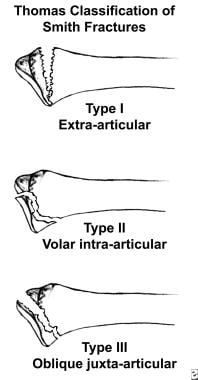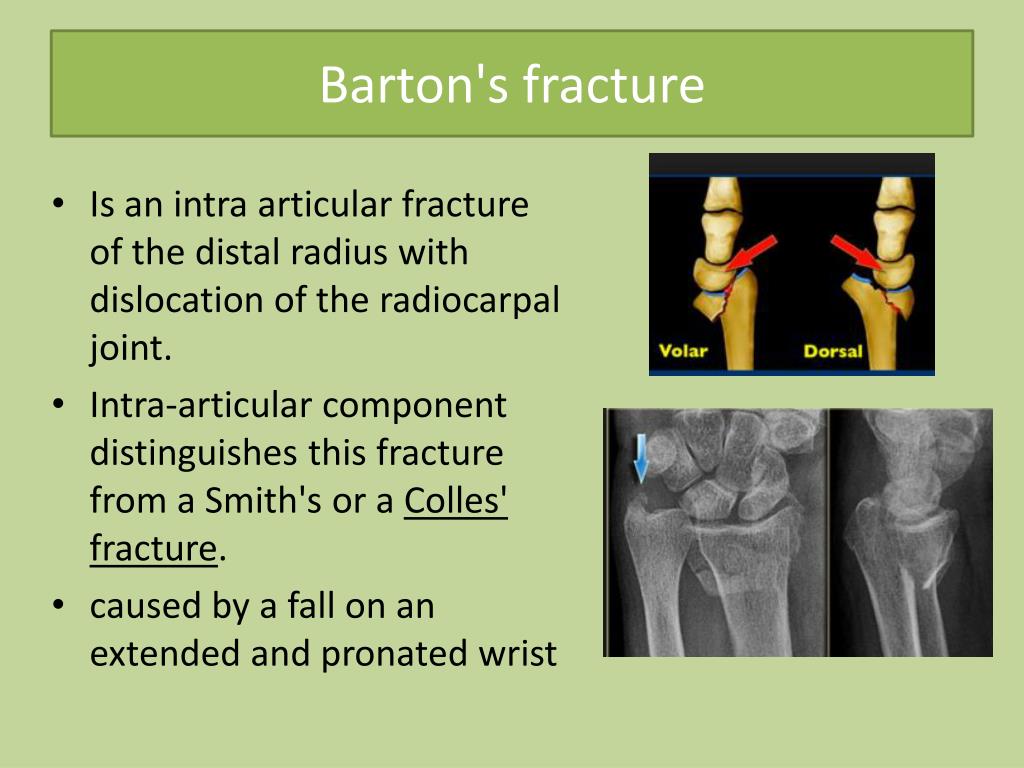


This then changes the diagnoses from Colles or Smith to a Barton’s fracture. In either case of the above be sure to assess for carpal displacement. We might be doing the same thing in the ED- but let your patient know- there is a high chance they may need surgical intervention.Ĭolles Fractures are often called “Dinner Fork Deformities.” Can you tell which one is which? I’d insult you but I personally love finger foods so it’s been a while since I’ve seen a fork too. Reduce, place in long arm or sugar tong and give them prompt ortho or hand specialist follow up.īe careful though, these might marketed as “Reverse Colles” but these are much more likely to be unstable or have nerve/ligamentous injuries. The radial fracture will include palmar displacement of the distal fragment. Most likely patient will be able to be managed non-operatively but have them follow up relatively soon with ortho, unstable Colles are likely to lose the reduction, have instability or develop early onset of arthritic symptoms.īasically this is same, same but different. Also described as the dinner fork deformity, reduce the fracture and place in a sugar tong splint. The XRays will be evident for dorsal displacement of the distal radius. Key point: Colles will be a typicall FOOSH, Smith will be a history of a flexed hand. These are three more don’t miss diagnoses associated with falling on hands. Good old mnemonics and cartoon’s to do my job for me. Otherwise, reduce the radial head dislocation and place patient in long arm splint in supination. Make sure you do a complete neurovascular exam as radial nerve deficits are common (up to 17%!) Sooo look for wrist drop, dorsal hand sensation lost or most commonly finger extension weakness (posterior interosseous branch.) Again, especially if this is in an adult- they are likely to need surgical intervention, so get Ortho involved early. A Monteggia fracture is any ulnar fracture associated with radial head dislocation. Normal (Right)ĭon’t miss the associated radial head dislocation! For every ulnar fracture- draw a line through the radius- this should bisect the capitellum (C) in any view.Ĭompared to the Galeazzi this is more common in kiddos. Distal Radial- Ulnar Joint space widening (Left) v. Meanwhile, reduce the radial fracture as needed and place patient in a long arm splint in supination. These have really high risk of complications with cast immobilization so you want to let your Orthopod know sooner rather than later so they can ORIF these bad boys.

So what’s the big deal you ask? You don’t splint these like you would a simple radial fracture. Though we typically preach this to be widening of the DRUJ space (>2mm), Galeazzi also defined disruption to include a fracture at the base of the ulnar styloid process or greater than 5 mm shortening of the radius relative to the distal ulnar.

Though a distal radial fracture may be obvious with deformity, make sure to take a look for disruption of the distal radio-ulnar joint (DRUJ) on XRays. You’re also gonna place both of these in long arm splints in supination in the ED. Here’s a summary of the more common forearm fractures and what to do about them.įor both of these diagnoses, the patient will likely tell a story of a FOOSH while in pronation.


 0 kommentar(er)
0 kommentar(er)
